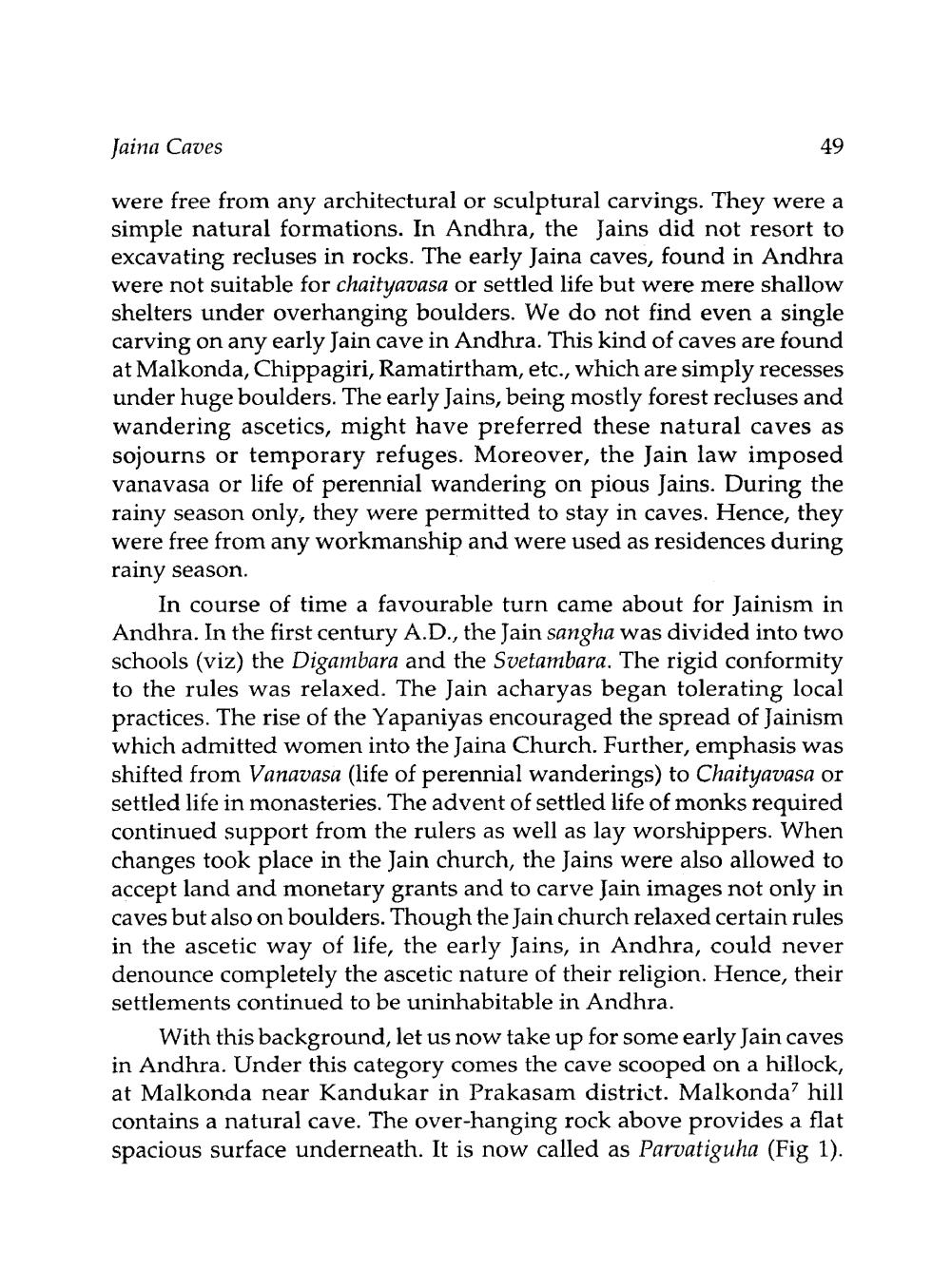________________
Jaina Caves
were free from any architectural or sculptural carvings. They were a simple natural formations. In Andhra, the Jains did not resort to excavating recluses in rocks. The early Jaina caves, found in Andhra were not suitable for chaityavasa or settled life but were mere shallow shelters under overhanging boulders. We do not find even a single carving on any early Jain cave in Andhra. This kind of caves are found at Malkonda, Chippagiri, Ramatirtham, etc., which are simply recesses under huge boulders. The early Jains, being mostly forest recluses and wandering ascetics, might have preferred these natural caves as sojourns or temporary refuges. Moreover, the Jain law imposed vanavasa or life of perennial wandering on pious Jains. During the rainy season only, they were permitted to stay in caves. Hence, they were free from any workmanship and were used as residences during rainy season.
49
In course of time a favourable turn came about for Jainism in Andhra. In the first century A.D., the Jain sangha was divided into two schools (viz) the Digambara and the Svetambara. The rigid conformity to the rules was relaxed. The Jain acharyas began tolerating local practices. The rise of the Yapaniyas encouraged the spread of Jainism which admitted women into the Jaina Church. Further, emphasis was shifted from Vanavasa (life of perennial wanderings) to Chaityavasa or settled life in monasteries. The advent of settled life of monks required continued support from the rulers as well as lay worshippers. When changes took place in the Jain church, the Jains were also allowed to accept land and monetary grants and to carve Jain images not only in caves but also on boulders. Though the Jain church relaxed certain rules in the ascetic way of life, the early Jains, in Andhra, could never denounce completely the ascetic nature of their religion. Hence, their settlements continued to be uninhabitable in Andhra.
With this background, let us now take up for some early Jain caves in Andhra. Under this category comes the cave scooped on a hillock, at Malkonda near Kandukar in Prakasam district. Malkonda' hill contains a natural cave. The over-hanging rock above provides a flat spacious surface underneath. It is now called as Parvatiguha (Fig 1).




